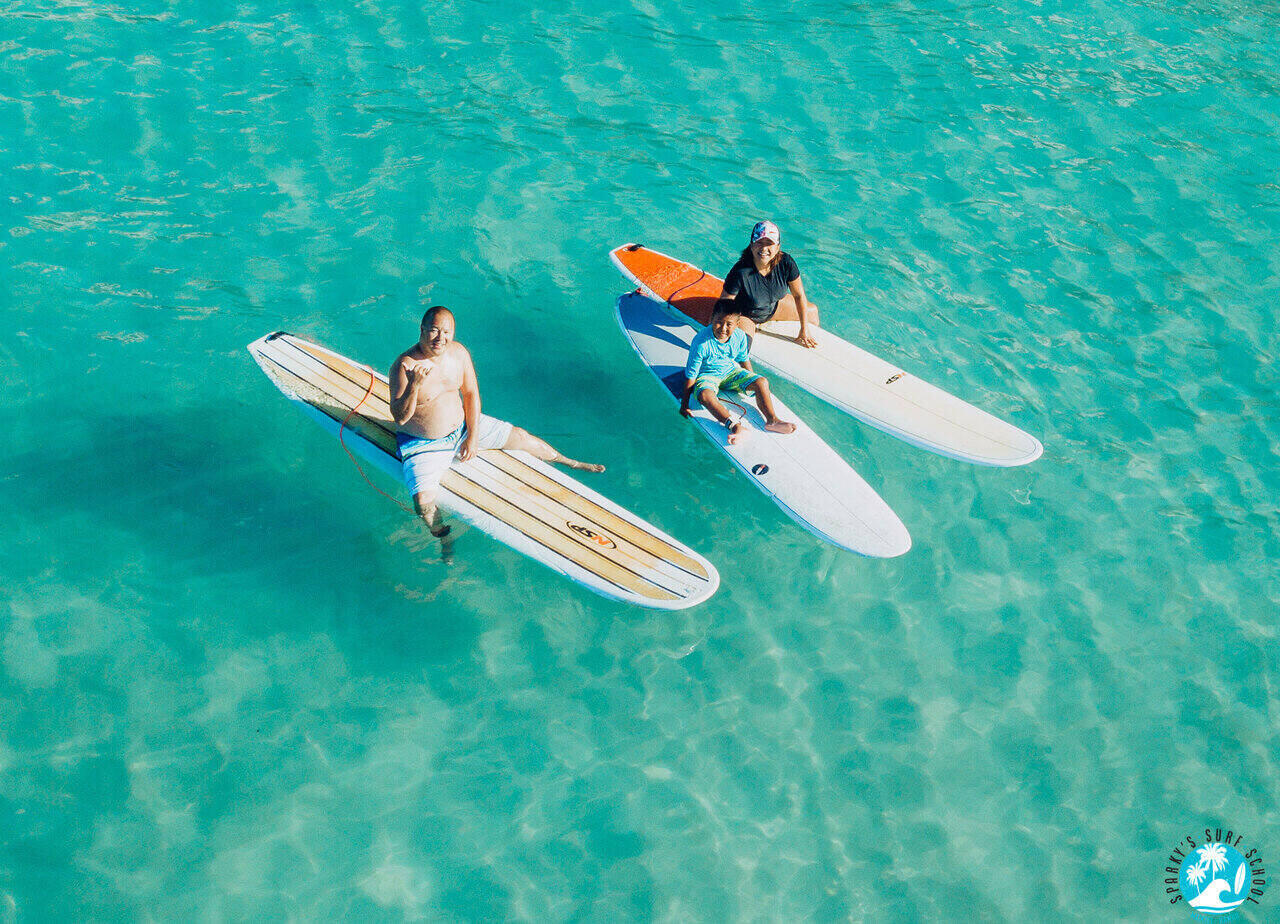So you’re searching for information about the best time of the year to surf Waikiki. That means you’re either planning your trip around the answer, or you’ve already booked your HNL arrival and want to know what to expect before you saunter out of your hotel and head for the beach. While any of the 365 days of the year is great for people of all skill levels, there are indeed some things for beginners to consider with the passing of each season. For one, you should stick to the consistent surf spot known as Canoes, which is a reef break with a sand and coral bottom that is world famous yet absolutely welcoming to malihini (newcomers). Facing the ocean, it’s located directly behind the Duke Kahanamoku Statue, which is not-so-coincidently where you’ll find Sparky’s Surf School conducting the day’s wave riding symphony. Here’s what else you need to know.
What Beginners Can Expect When Learning to Surf During Any One of the Four Seasons in Waikiki Beach
Spring
Many people travel to Oahu and stay in Waikiki during mainland spring break, which runs from March and for some extends into April. This is early spring season, and typically the waves at Canoes will run 1-3 feet. In that range you can paddle out to the peak without little concern as long as you let the locals get their pick of the saltwater litter. As the season progresses, things gradually begin to pick up as the season edges closer towards the summer. In late April, May, and into early June you could see wave heights on the outside grow passed 3-feet. If they do, and you’re not ready, simply stick to the inside and you can catch smaller waves from the second take off spot.
Summer
As noted above, spring’s lead into summer delivers bigger sets, and once you head into the thick of the season it is not that uncommon to see the outside of Canoes deliver some pretty darn fun waves for more seasoned surfers. Don’t get us wrong, there are more 1-3 foot summer days than us locals might prefer, but Canoes also gets blessed with plenty 3-5 foot (sometimes more) days too. When it gets big (err….Waikiki Beach big) you can still enjoy your days on the inside, catching the reform waves that roll through and carry you and your longboard (hopefully connected) almost all the way to shore.
Autumn
With Labor Day long gone and Halloween decor lining Kalakaua Avenue the energetic summertime waves give way to more mellow autumn 1.5-3.5 foot swell on the south shore. But with leftover pulses here and there you can get a nice surprise on any given day, which is a big plus for beginners who are looking for more of a challenge, albeit with little consequence. This is a good time of the year to comb the lineup, testing your newfound skill on the inside and outside alike, venturing over into neighboring surf spots Populars (Pops) and even Queens when the crowds permit. Once the Holiday season arrives fewer “gifts” pop up, with many 1-2 foot days that require an extra 1 to 2 feet of board length to catch the weaker sets. Still, there’s no such thing as a “bad day” out here in the quintessential surfer’s paradise!
Winter
Winter is the opposite of summer so you know what that means for the south shore – smaller waves. For literal beginners this is a real blessing, and makes for the perfect time to start surfing. The great thing about Waikiki Beach (Canoes in particular) is that it’s darn consistent, so with the right board you can still catch waves all day long, even if the intervals are a bit longer. You may hear the locals sitting up at LuLu’s grumble about how it’s flat, but that just means they’ll pack up and head North (where the winter action is) and leave plenty of space for you to get your sea legs in gear.
Whether or not the waves are big (a relative term) or small, it does help to have someone there to guide you through the beginner phase. You see, it’s not just about the differences in wave height during the four seasons, but the changes in the current, direction, and strength of swell. A 3-foot wave in the summer can feel a lot different that a 3-foot wave in the winter. Plus, on any given day, week, or month, takeoff zones and other conditions may shift and can frustrate the experience for those not entirely familiar with the lay of the reef at Canoes or any other spot found off the shores of Waikiki. Be sure maximize both efficiency but most of all FUN the next time you surf Waikiki Beach by paddling out with us. Contact Sparky’s Surf School today to learn more.
